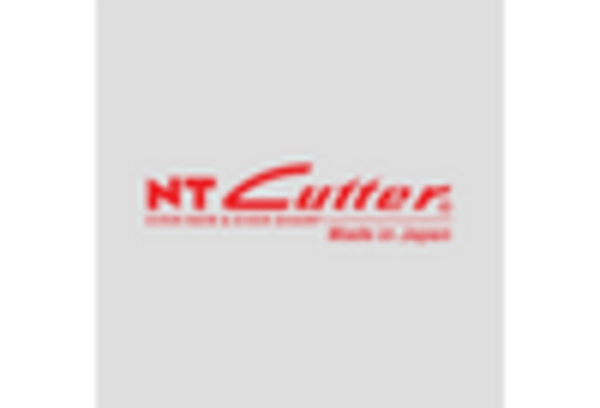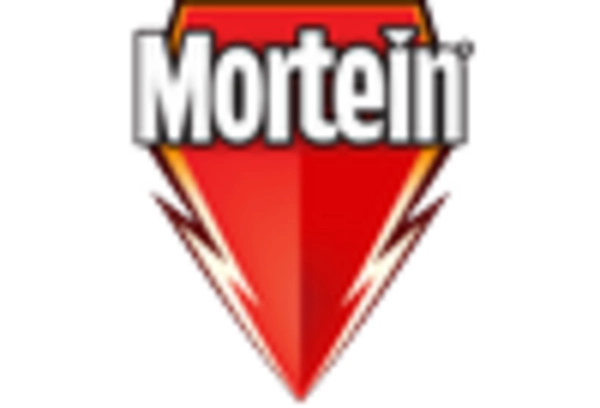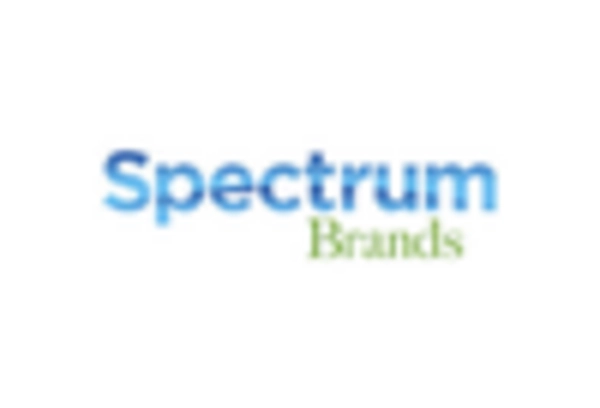Expansion of Outdoor Activities
The expansion of outdoor activities in the United States is significantly influencing the mosquito repellents market. As more individuals engage in recreational activities such as camping, hiking, and outdoor sports, the need for effective mosquito protection becomes paramount. The Outdoor Industry Association reports that outdoor participation has increased, with millions of Americans spending time in nature. This trend is likely to boost the demand for mosquito repellents, as consumers seek products that can provide long-lasting protection against mosquito bites. Additionally, the rise in outdoor events and festivals further amplifies the need for effective repellents, as attendees are often exposed to mosquito-prone environments. Consequently, the mosquito repellents market is poised for growth, driven by the increasing popularity of outdoor lifestyles.
Increased Awareness of Health Risks
The heightened awareness of health risks associated with mosquito-borne diseases is a primary driver for the mosquito repellents market. Diseases such as West Nile virus and Zika virus have raised public concern, leading to increased demand for effective mosquito repellents. According to the Centers for Disease Control and Prevention (CDC), the incidence of these diseases has prompted consumers to seek preventive measures. This growing awareness is likely to drive sales in the mosquito repellents market, as individuals prioritize personal health and safety. Furthermore, educational campaigns by health organizations have contributed to this trend, emphasizing the importance of using repellents during peak mosquito activity seasons. As a result, the market is expected to see a steady increase in demand, with consumers willing to invest in products that offer protection against these health threats.
Rising Demand for Eco-Friendly Products
The rising demand for eco-friendly products is emerging as a significant driver for the mosquito repellents market. Consumers are increasingly seeking natural and environmentally friendly alternatives to traditional chemical repellents. This shift in consumer preference is reflected in market trends, with a growing number of brands introducing products that utilize plant-based ingredients. According to recent surveys, approximately 60% of consumers express a preference for eco-friendly options when selecting mosquito repellents. This trend is likely to encourage manufacturers to innovate and develop formulations that align with sustainability goals. As awareness of environmental issues continues to grow, the mosquito repellents market may experience a shift towards greener products, catering to the preferences of environmentally conscious consumers.
Regulatory Support for Repellent Products
Regulatory support for mosquito repellent products plays a crucial role in shaping the mosquito repellents market. The Environmental Protection Agency (EPA) has established guidelines for the safety and efficacy of mosquito repellents, which helps to build consumer trust in these products. This regulatory framework encourages manufacturers to innovate and improve their formulations, leading to a wider variety of options available in the market. Furthermore, the endorsement of certain active ingredients by regulatory bodies enhances consumer confidence, potentially increasing sales. As the market evolves, compliance with these regulations is likely to drive product development and marketing strategies, ultimately benefiting the mosquito repellents market. The presence of a robust regulatory environment may also deter substandard products, ensuring that consumers have access to safe and effective repellents.
Technological Advancements in Product Formulation
Technological advancements in product formulation are driving innovation within the mosquito repellents market. The development of new active ingredients and delivery systems has enhanced the effectiveness and longevity of repellents. For instance, microencapsulation technology allows for the slow release of active ingredients, providing extended protection against mosquito bites. This innovation not only improves product performance but also appeals to consumers seeking long-lasting solutions. Additionally, advancements in formulation techniques enable manufacturers to create products that are less irritating to the skin, broadening their appeal. As these technological improvements continue to emerge, they are likely to reshape the mosquito repellents market, offering consumers more effective and user-friendly options.

















Leave a Comment